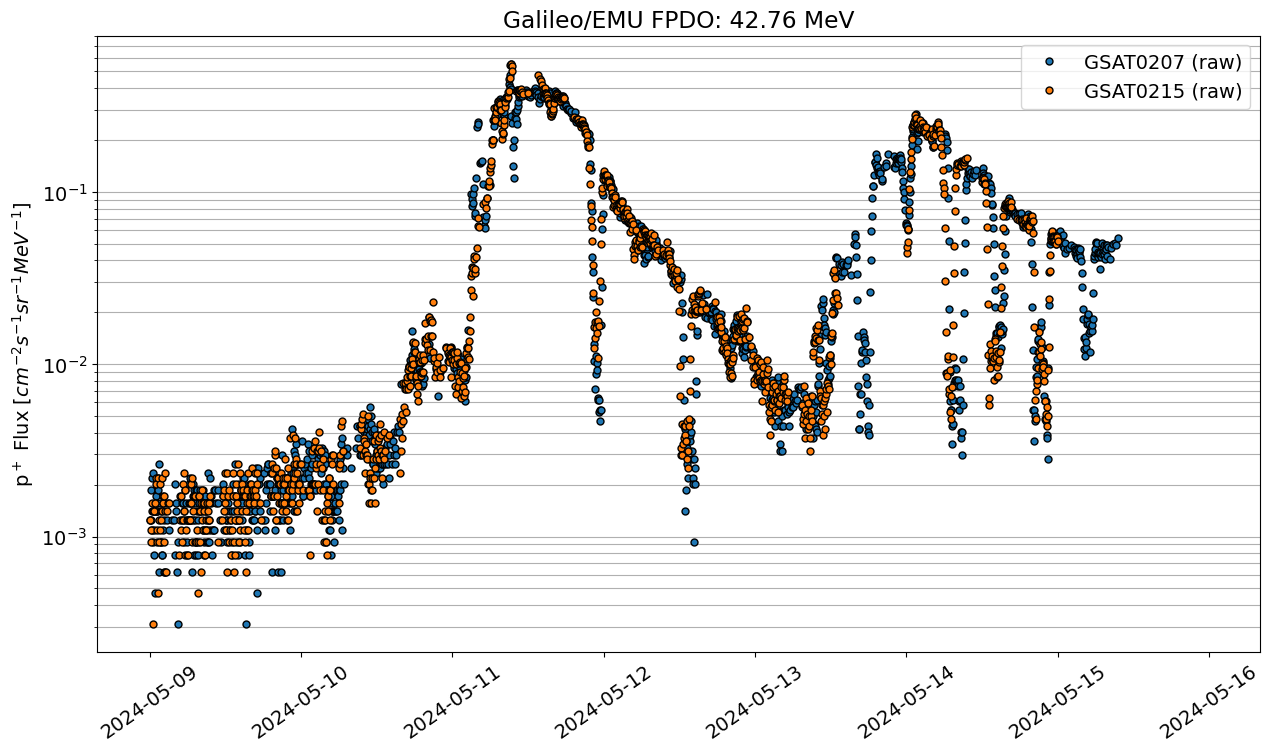The solar storms of May 2024 were a series of powerful solar storms with extreme solar flares and geomagnetic storm components that occurred from 10–13 May 2024 during solar cycle 25. The geomagnetic storm was the most powerful to affect Earth since March 1989, and produced aurorae at far more equatorial latitudes than usual in both the Northern and Southern Hemispheres.
These events resulted in numerous Coronal Mass Ejections, one of which was of such magnitude as to cause Aurora to be reported as far south as Greece. The disruption to the Terrestrial radiation belts was monitored with the radiation monitors on Sentinel-6, EDRS-C, Galileo, INTEGRAL, PROBA-1, and PROBA-V.
Aurora photo credit: G.Deprez, TEC-EPS

In addition to the Aurora, the solar storms interacted strongly with the Earth’s magnetic field with dramatic effect on the trapped radiation belts. The disturbance provided an initial drop out of electrons in the outer radiation belt, followed by a deep injection of energetic electrons into the “slot region” between the two belts, shown in the plots below. Note: The “L-Shell” is a geomagnetic coordinate that can be considered (loosely) as an equatorial altitude expressed in Earth Radii. Geostationary orbit is at an L-shell of 6.7.

X-ray flare event (X3.9) from 06:54 on the 10th May from the NOAA/GOES-17 SUVI instrument. A movie of the X-ray flare is available (JHV_2024-05-16_16.37.35.mp4).

The Sentinel-6 Radiation Monitoring Unit (aka NGRM) EDSS-10 channel (>1 MeV electrons) count rate. The initial impact of the storm is seen as a drop out of electrons on the 10th May, followed by a deep injection of trapped electrons on the 11th with a further increase in fluxes and diffusion to different L-shells in the following days. Geostationary orbit sits around an L-Shell of 6.7, The L-shells for Galileo range above 4.5. The times of the X class flares are indicated in the balloon annotation.

The Sentinel-6 Radiation Monitoring Unit (aka NGRM) SDSS-6 channel (>35 MeV proton) countrate. The onset of the storm is seen as a blue column at high L-shell on the 11th May as the solar energetic particles arrive at Earth. As the strength of the storm’s effect on the Earth’s magnetic field diminishes the geomagnetic shielding of the penetrating protons recovers, seen by the decrease of the proton’s penetration to lower L-shells in the blue bands on the right.
Interestingly, the inner trapped proton belt is also pushed inwards on the 11th, resulting in a decrease of energetic protons at an L-shell of ~2.3 (O3B orbit) with a following enhancement of the trapped proton fluxes at L-shells between 1 and 2 Earth radii.

The effect of the storms on the outer electron radiation belt was minimal, as show in this time series data from the EDRS-C/NGRM instrument in Geostationary orbit (L=~6.7). The initial drop out of the electrons in the belt at the storm commencement is evident on the 11th with a subsequent chaotic recovery on the following day. The daily peak electron fluxes throughout the event, though did not vary dramatically (factor of 2-3). In the coming days it is expected that the electron fluxes will increase as the injection of energetic particles at lower L-shells slowly diffuse up to the Geostationary altitudes.

The above plot shows the trapped electron fluxes measured by the EMU instruments on Galileo GSAT0207 and GSAT0215. As with the previous plots, the drop out of electron fluxes at the event onset is followed by an increase in electron fluxes over the subsequent days.

The above plot shows the 43 MeV Solar Proton fluxes measured by the Galileo EMU instrument. Despite the severity of the events on the Geomagnetic field and trapped particle belts, there were not many energetic solar particles included with the event – a windy storm with little rain. The inverted spikes in the plot show the effect of geomagnetic shielding as the spacecraft pass through the lower latitudes, and regions of greater geomagnetic shielding.
